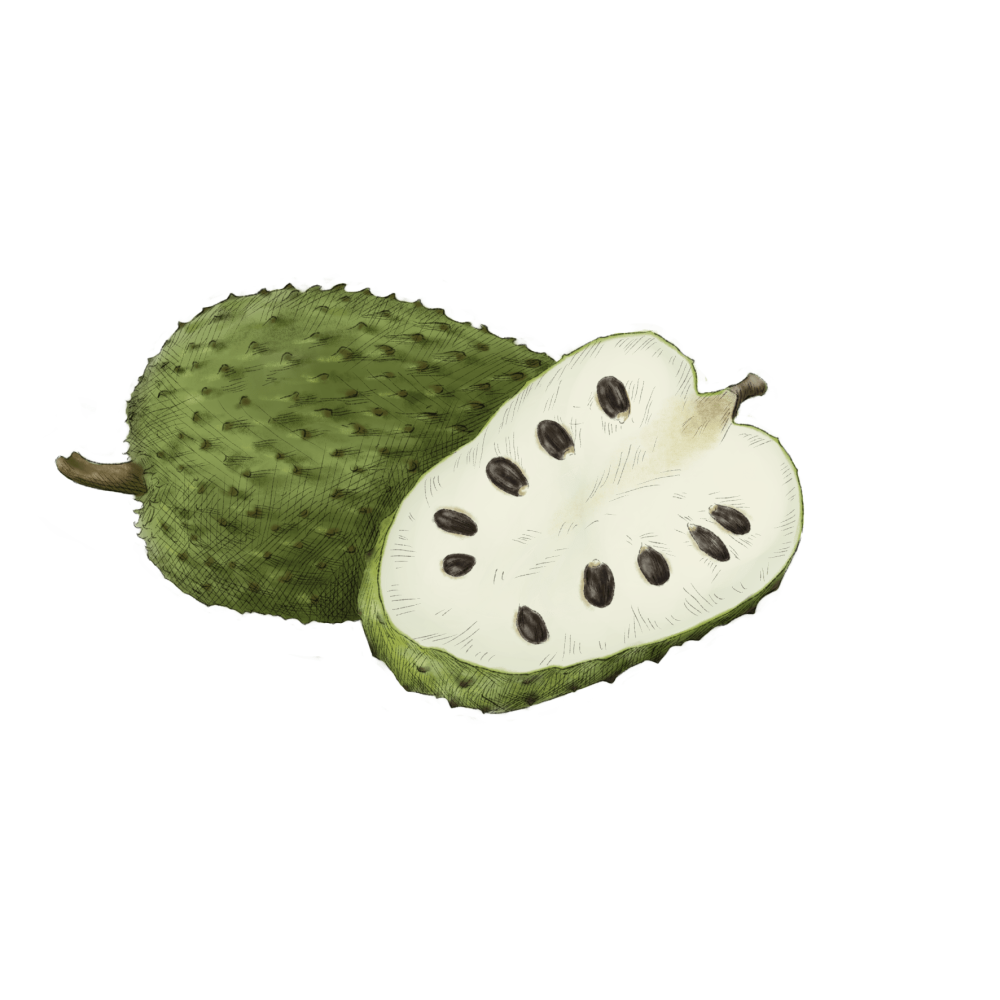Soursop

Latin name: Annona muricata
Other names: Graviola
Uses: Fruit, tea
What is soursop?
Soursop is the fruit of an evergreen tropical tree. Like its cousin cherimoya — they share both a family and a genus — soursop more closely resembles a dragon’s egg than a fruit. Soursop can be tricky to source, but frozen pulp is generally available in Asian and Latinx markets.
Why is soursop healthy?
Soursop is packed with vitamin C, with one fruit containing more than twice the RDA. It’s also full of B vitamins, fiber, and essential minerals. Some evidence suggests that it has anti-inflammatory, antibacterial, and even anti-cancer properties. The leaves and fruit have been used traditionally to treat rashes and infections.
What does soursop taste like?
Soursop has a flavor similar to cherimoya: musky and pineapple-adjacent, with a tart, fragrant strawberry top note and a creamy texture similar to very ripe bananas. The primary aromatic compound present in soursop — methyl hexanoate — is the same one found in pineapple.
How do I use soursop?
If you’re fortunate enough to find fresh soursop, cut it open and spoon out the pulp. You can either pick the large black seeds out by hand or scrape the pulp through a sieve to remove the seeds and fiber. (Frozen pulp is generally seedless and easier to use.) The fruit is typically either juiced or used in smoothies and frozen desserts, and these are all fine uses for it, since the texture is so soft and creamy that it doesn’t really hold its structure in other applications.
What does soursop pair well with?
Pair soursop with other tropical fruity flavors like pineapple, coconut, and citrus, but don’t be afraid to play with its slightly musky aroma and add it to Southeast Asian curries, where it’ll pair beautifully with makrut, ginger, turmeric, chile, garlic, and shallot.
Where does soursop grow?
Soursop’s precise origins are not clearly known, but it likely originated in the tropics of the Caribbean, Central America, and northern South America, where it still grows today. Archaeological evidence suggests it was grown in ancient Peru. It’s currently considered invasive in many of the South Pacific Islands, including Hawaii, but it’s also grown in Southeast Asia.
How to buy soursop:
When shopping for fresh soursop, choose dark green specimens that are heavy for their size, with lots of spines. Store them at room temperature, and once they’ve ripened to softness, use them within a couple days (or scoop out the pulp and freeze it for later). The dried leaves, used for tea in Indonesia, might be found in South Asian markets.
Fun soursop fact:
Though soursop is considered a folk medicine plant in parts of Southeast Asia, care should be taken to avoid the seeds. The seeds contain the neurotoxin annonacin, which can cause hallucinations and symptoms of neurodegenerative disorders similar to Parkinson’s disease.


